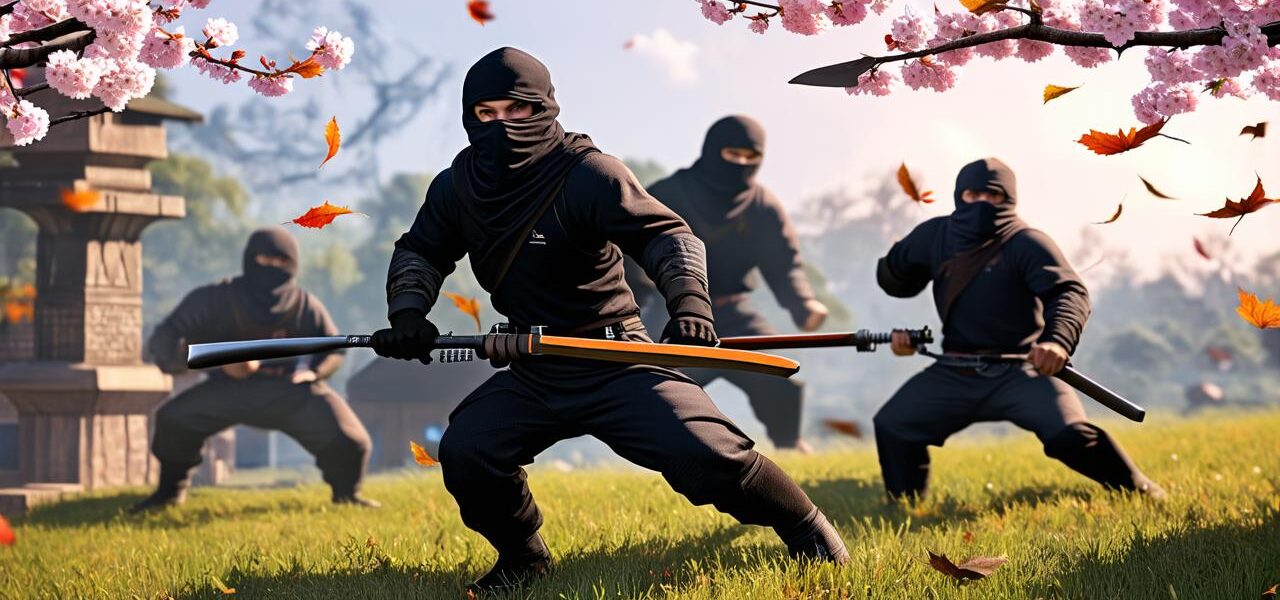Introduction
Ninjas have long been a popular archetype in video games. From the classic Teenage Mutant Ninja Turtles to modern-day franchises like Assassin’s Creed, the ninja has captured the imaginations of gamers around the world.
Types of Ninja Archetypes in Video Games
When examining the ninja archetype in video games, there are several different subcategories that can be identified. These include:
- The Stealth Assassin: This is perhaps the most iconic type of ninja archetype in video games, and it is characterized by its ability to move silently and unseen, striking from the shadows to eliminate enemies with surgical precision. Examples of this type can be found in games like Splinter Cell, Mark of the Ninja, and Shadow Warrior.
- The Ninja Hunter: In some cases, the ninja archetype is presented as a hunter or tracker rather than an assassin. These characters often possess advanced stealth and tracking abilities, allowing them to pursue their enemies through dense environments with ruthless efficiency. Examples of this type can be found in games like Tenchu: Infinity Blade and Ninja Gaiden.
- The Master Thief: While not strictly a ninja archetype, the master thief is often associated with the ninja due to its emphasis on stealth, agility, and dexterity. Games like Thief and Uncharted feature protagonists who use their skills in infiltration and evasion to navigate treacherous environments and outsmart their foes.
- The Ninja Warrior: Finally, there are some video games that present the ninja archetype as a powerful warrior or fighter rather than an assassin or thief. These characters often possess enhanced physical abilities and weaponry, making them formidable opponents in combat. Examples of this type can be found in games like Ninja Warriors: Next Succession and Samurai Warriors.
The History and Cultural Significance of the Ninja Archetype

To understand the appeal of the ninja archetype in video games, it is important to first explore its history and cultural significance. The ninja were a highly secretive and elite group of warriors in ancient Japan, known for their mastery of stealth, deception, and espionage. They were often used by the Japanese government for covert operations and assassinations, as well as for gathering intelligence and sabotaging enemy strongholds.
The ninja archetype has its roots in Japanese folklore and mythology, and is closely tied to the concept of bushido – a code of conduct that governed the behavior of samurais and other warriors in ancient Japan. The ninja were seen as outsiders from the main samurai caste, and their skills in stealth and deception allowed them to operate in a way that was both subversive and highly effective.
Over time, the legend of the ninja has been romanticized and mythologized, with stories and legends circulating about their incredible feats of skill and daring. This has helped to create a powerful archetype that is often associated with agility, stealth, and the ability to adapt to any situation.
The Evolution of the Ninja Archetype in Video Games
As video games have evolved over time, so too has the ninja archetype. In early games, the ninja was often presented as a faceless assassin or thief, with little attention paid to their history or cultural significance. However, as games like Splinter Cell and Tenchu: Infinity Blade began to explore the ninja archetype in more depth, players were introduced to a richer and more nuanced version of this iconic warrior.
Modern games continue to build upon this foundation, with characters like Master Chief from Halo and Sam Fisher from Splinter Cell embodying the stealth and agility of the ninja archetype while also incorporating elements of modern technology and combat tactics.
The Impact of the Ninja Archetype on Gaming Culture
The ninja archetype has had a profound impact on gaming culture, influencing not only the types of characters that are created but also the ways in which players approach games. The emphasis on stealth and agility that is central to the ninja archetype has helped to create a new genre of action-adventure games that emphasize exploration and evasion over brute force.
At the same time, the ninja archetype has also been subject to criticism and critique for promoting a narrow and problematic view of Japanese culture and history. Some argue that the stereotypical portrayal of the ninja as a faceless assassin or thief perpetuates negative attitudes towards Japanese society and ignores the complex and nuanced role that these warriors played in shaping Japanese history.
Conclusion
In conclusion, the ninja archetype is a powerful and enduring presence in video games, representing everything from ruthless assassins to skilled warriors and master thieves. The appeal of this iconic warrior lies in its rich cultural history and the timeless values of stealth, agility, and adaptability that it embodies. As video game designers continue to explore this archetype, they must be mindful of the impact that their creations have on gaming culture and strive to create nuanced and well-rounded characters that reflect the true complexity of Japanese history and culture.




